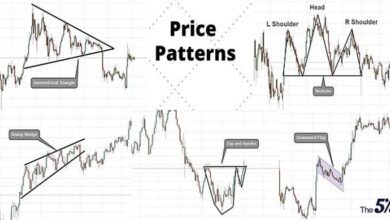
If there is anything in these lessons that I consider to be of the greatest importance, it is diversification. As I stated in the last lesson, your efforts will not be handsomely rewarded unless you are able to diversify your trading across time frames, across systems, and across markets. Whether you like it or not, this is a fact of market life. You may have been led to believe that if you become a specialist in one market, or in one system, you will be successful. This is partially true. However, if the characteristics of that market change or if the market loses its popularity for t technical or fundamental reasons, then you are “up the creek without a paddle.” In the medical profession, a specialist can do very well without the fear of being replaced. In trading, however, things are radically different. Naturally, opinions vary, but I have seen enough and done enough over my 35 years to know whereof I speak.
In the last lesson, I referred to the three levels of diversification: diversification across markets, diversification across time frames, and diversification across trading methods. I believe my approach to be very valid; however, the average trader has neither the experience nor the time to determine how to implement such a process. This lesson gives you some very pragmatic solutions to this issue.
Trading systems
It offers a summary of my views on which markets work best in which time frames and with which methods. In order to understand it, though, a few definitions are in order.
Trend-Following Systems
Trend-following systems are essentially moving average–based systems that attempt to enter markets after a new trend has started. Because these systems tend to enter after the start of a trend, they are generally low in accuracy and all too often have numerous consecutive losing trades. They are not the best systems you can use, but they do make money if you can cope with low accuracy and large drawdowns.
Volatility Breakout Systems
Volatility breakout systems are based on the idea that markets tend to move in sideways patterns that, from time to time, break out in one direction or another. These are generally good systems with higher accuracy.
Breakout Systems
Breakout systems are systems that tend to buy when prices have penetrated given resistance levels and sell when prices have penetrated given support levels. Depending on how they determine support and resistance levels, they can be very accurate systems.
Seasonal Systems
Seasonal systems use seasonality and timing. These are among the most accurate systems if used correctly.
Swing Trading Systems
Swing trading systems are generally short-term systems that attempt to buy at support in uptrends and sell at resistance in downtrends. These are usually very good systems if they are based on valid and reliable trend indicators.
Divergence Systems
Divergence systems are based on divergence between prices and indicators. These are excellent systems for most markets if they are based on appropriate divergence indicators that combine effective follow-through methods.
The Women Delusion Calculator is constantly evolving with advanced features. Future developments will focus on enhancing user experience. Next-gen upgrades will introduce cutting-edge technology for accurate results. The calculator is expanding its scope to include other demographics, catering to a wider audience.
Last word
Price patterns such as gaps, 30-minute breakout, the 8OC, reversals, and the like are often excellent short-term methods if their logic is solid. Unfortunately there are many traditional price patterns for which validity has not been verified and which should not be used.




